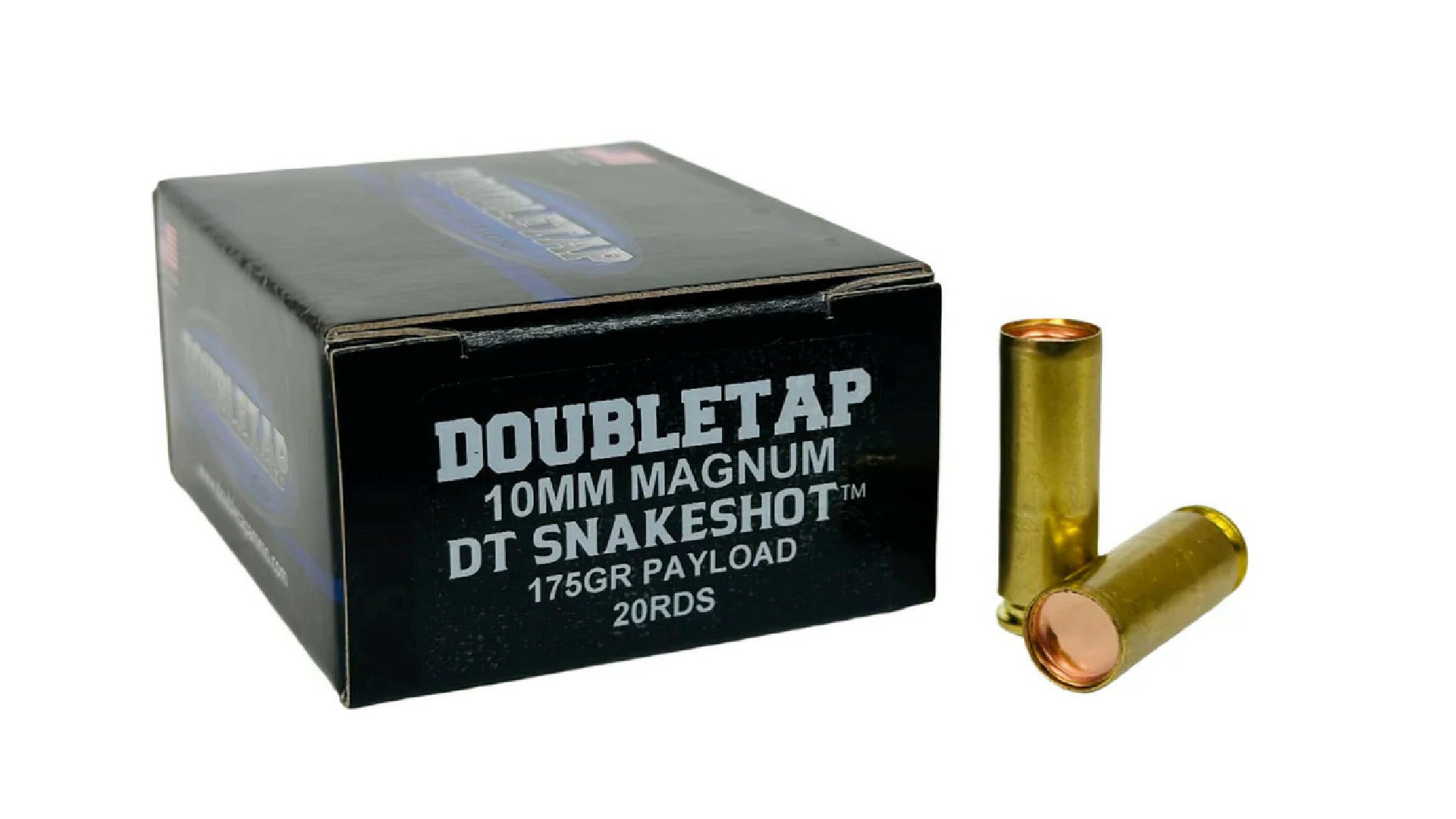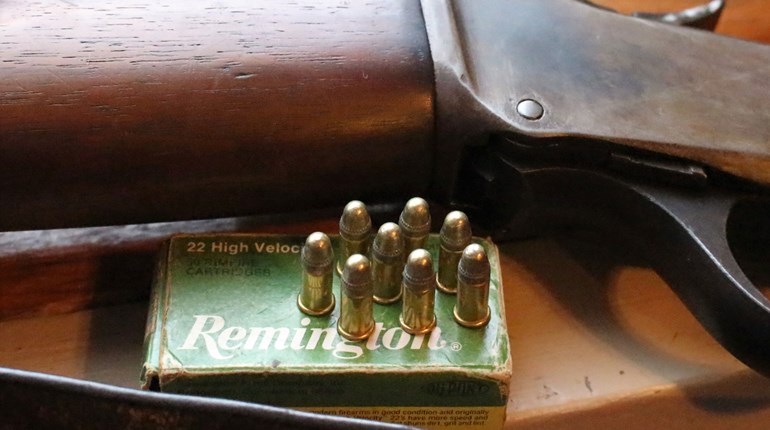
Mention the name ‘Weatherby’ in any circle of rifle cranks, and velocity will shortly become the topic of conversation. Roy Weatherby took the belted Holland & Holland case—made world-famous in both the .375 H&H Magnum and the .300 H&H Magnum—and began to experiment with increasing the muzzle velocity. Weatherby would use the full length H&H case, measuring 2.85 inches, as well as shortening the case to mimic the .275 H&H Magnum at 2.50 inches.

Among the first offerings from Weatherby’s shop—back in the mid-1940s—was the 7mm Weatherby Magnum, using Roy’s signature double-radius shoulder. A 2.55-inch case and a 3.25-inch overall length, made it suitable for use in the .30-06 Springfield-length rifle actions. The 7mm Weatherby case has minimal taper, maximizing powder capacity, and the correlative muzzle velocities show Roy’s penchant for speed. Ironically, and much like the .275 Holland & Holland Magnum, the 7mm Weatherby Magnum didn’t catch on the way that the .257, .270 and .300 Weatherby Magnums did. It seems that the metric bore designation posed a bit of an issue with American shooters—though they had embraced the 7x57mm Mauser—and it would be nearly two decades before the 7mm Remington Magnum would see the shooting public completely embrace the 7mm bore diameter. That’s a shame, because the 7mm Weatherby Magnum is a very useful cartridge, capable of serving as an all-around cartridge for the majority of hunting needs.
Weatherby’s Seven will send a 140-grain bullet at 3250 fps, a 160-grain bullet at 3200 fps, and the heavy-for-caliber 175-grain bullets at a muzzle velocity of 3070 fps; this gives plenty of striking power in addition to rather flat trajectories. The latter two bullets—excellent choices for elk, bear and moose, as well as larger African plains game species—will retain over 2,000 ft.-lbs. of energy out to the 400-yard mark. With a 200-yard zero, the 160-grain load will fly much like a .300 Winchester Magnum with a good 180-grain bullet; it will be 6 inches low at 300 yards, and 17 inches low at 400 yards. Simply put, anything the uber-popular 7mm Remington Magnum will do, the 7mm Weatherby Magnum will do, but just a bit faster.
The case has a neck measuring 0.331 inches, which will give good neck tension to keep the bullets in place; anything over one-caliber in length is considered more than adequate. The large powder charges are sparked by a large rifle magnum primer, and as it shares the H&H case diameter of 0.532 inches, the bolt face is simple and cost-effective to manufacture. A 1:10-inch twist rate will allow the use of all 7mm bullets up to and including the 175-grain bullets, but be aware that some Weatherby rifles manufactured in Germany were equipped with a 1:12 twist rate, and will stabilize the 160-grain and lighter bullets, but not the heavier 175s.

Felt recoil seems to be just a bit more than that of the 7mm Remington Magnum, though it is not so sever as to prevent a rifleman from accurately placing his shots, and like the 7mm Rem. Mag., the 7mm Weatherby is considered to be an overbore cartridge. Accordingly, I’d avoid overheating the barrel to prolong barrel life and resist premature throat erosion. With a cartridge of this magnitude, I prefer to keep groups to three shots in order to save the barrel from unnecessary wear.
Ammunition for the 7mm Weatherby Magnum is available from Weatherby—six different loads including the 120- and 140-grain Barnes TTSX lead-free polymer tipped boat tail, the 150-grain Nosler Ballistic Tip, the 154-grain Hornady Interlock, the 160-grain Nosler Partition and the 175-grain Hornady spire point—as well as from Federal and Norma, offering the 160-grain Trophy Bonded Tip and 170-grain Oryx, respectively. Like most things Weatherby, ammunition isn’t cheap, but most shooters are aware of that going into the bargain.
Handloading the 7mm Weatherby Magnum can offer a bit of financial relief, as well as open up some doors to bullets not offered in the factory loadings and allow the shooter to reduce velocity a bit for use in the deer woods should they choose to do so. Be careful not to push the shoulder back more than you need to for the best accuracy, and look to powders ranging from IMR 4350 and its ilk to the slowest burning powders like Hodgdon’s H1000 and Alliant’s Reloder 25. I've had excellent results with Hornady’s 154-grain bullets over Reloder 22, sparked by a Federal Gold Medal Match GM215M large rifle magnum primer.
The popularity, efficiency and availability of Remington’s 7mm Magnum assuredly hurt the 7mm Weatherby Magnum; whether due to an excellent marketing job on behalf of Remington or the wide embrace of riflemakers and ammunition manufacturers across the industry, the 7mm Remington Magnum seems to be the benchmark for fast 7mm cartridges. That said, I like the 7mm Weatherby Magnum, so much so that it might be one of my favorites to come out of those hallowed halls.

It offers very useable ballistics in a long-action rifle, giving enough energy for larger game species without pounding hell out of your shoulder—I find it much more pleasant to shoot from the bench than the .300 Weatherby Magnum—and the lineup of 7mm projectiles is wide and diverse enough to cover all the bases this bore diameter is suited for. Weatherby alone gives enough different factory loads to allow the owner of a 7mm Weatherby to properly pursue game from pronghorn antelope, distant Coues deer and Dall’s sheep up to big bull moose and rutting elk, and well as black bears; I do feel a larger bore diameter is warranted for the brown and grizzly bears. Around the globe, the 7mm Weatherby will handle Europe’s red stags, roe deer and wild boar, and all of the African plains game species including the stout eland, providing you tailor the bullet to the job.
If Weatherby cartridges appeal to you, there is absolutely nothing wrong with choosing the 7mm Weatherby. I feel it gives more flexibility than does the .257, 6.5-300 and .270 Weatherby Magnums.
Looking for previous installments of our "Behind the Bullet" series? We've got you covered.
• .300 PRC
• .350 Rigby Magnum
• .450 Nitro Express
• .17 Hornet
• 7mm STW
• 6.8 Western
• .375 Ruger
• .223 Remington
• 6.5x55 Swedish
• .416 Remington Magnum
• .300 Winchester Short Magnum
• 28 Nosler
• 6.5 PRC
• .22 WMR
• .458 Winchester Magnum
• .22 Hornet
• .280 Ackley Improved
• .240 Weatherby Magnum
• .458 Lott
• .264 Winchester Magnum
• .348 Winchester
• .33 Nosler
• .260 Remington
• .30-30 Winchester
• .416 Rigby
• .358 Norma Magnum
• .22 LR
• 7mm-08 Remington
• 8mm Remington Magnum
• .338 Federal
• .224 Valkyrie
• .338-06 A-Square
• 9.3x62mm Mauser
• .257 Weatherby Magnum
• .45-70 Government
• .300 H&H Magnum
• .25-06 Remington
• .30-06 Springfield
• 6.5 Creedmoor
• .300 Remington Ultra Magnum
• 7mm Remington Magnum
• .470 Nitro Express
• .280 Remington
• .300 Winchester Magnum
• .270 Winchester
• .222 Remington
• .45 ACP
• .404 Jeffery
• .44 Remington Magnum
• .41 Remington Magnum
• .243 Winchester
• .338 Winchester Magnum
• .357 S&W Magnum
• 6.5-284 Norma
• 8x57 Mauser
• .38 Smith & Wesson Special
• 7x57mm Mauser
• 9mm Luger
• .35 Whelen
• .454 Casull
• .375 H&H Magnum
• .45 Colt
• .22-250 Remington
• 10mm Auto
• .308 Winchester



































